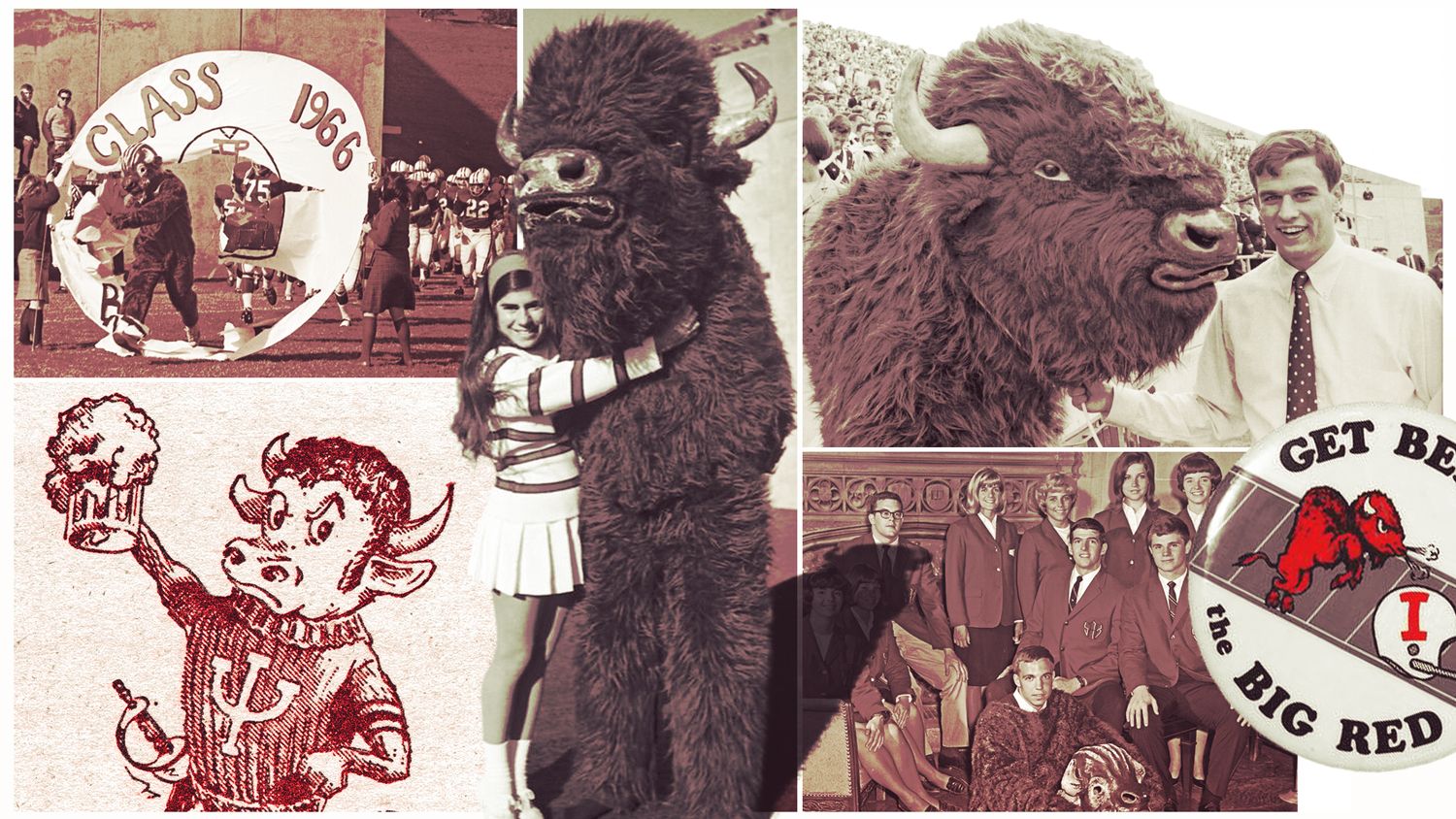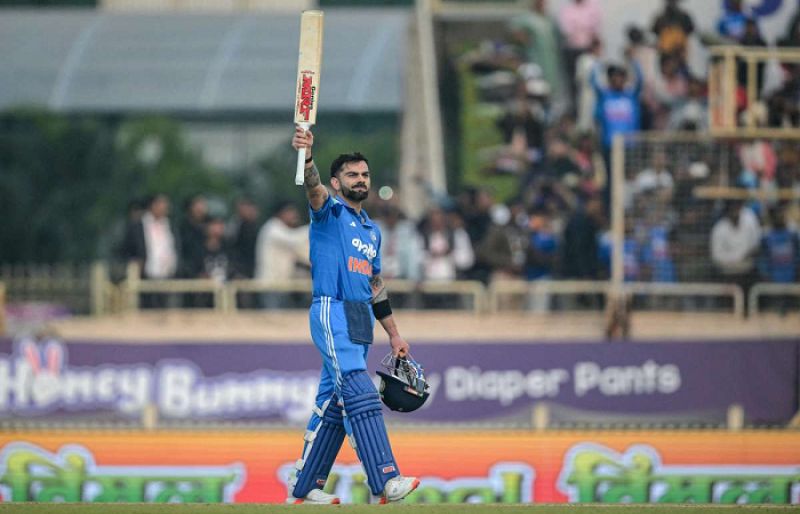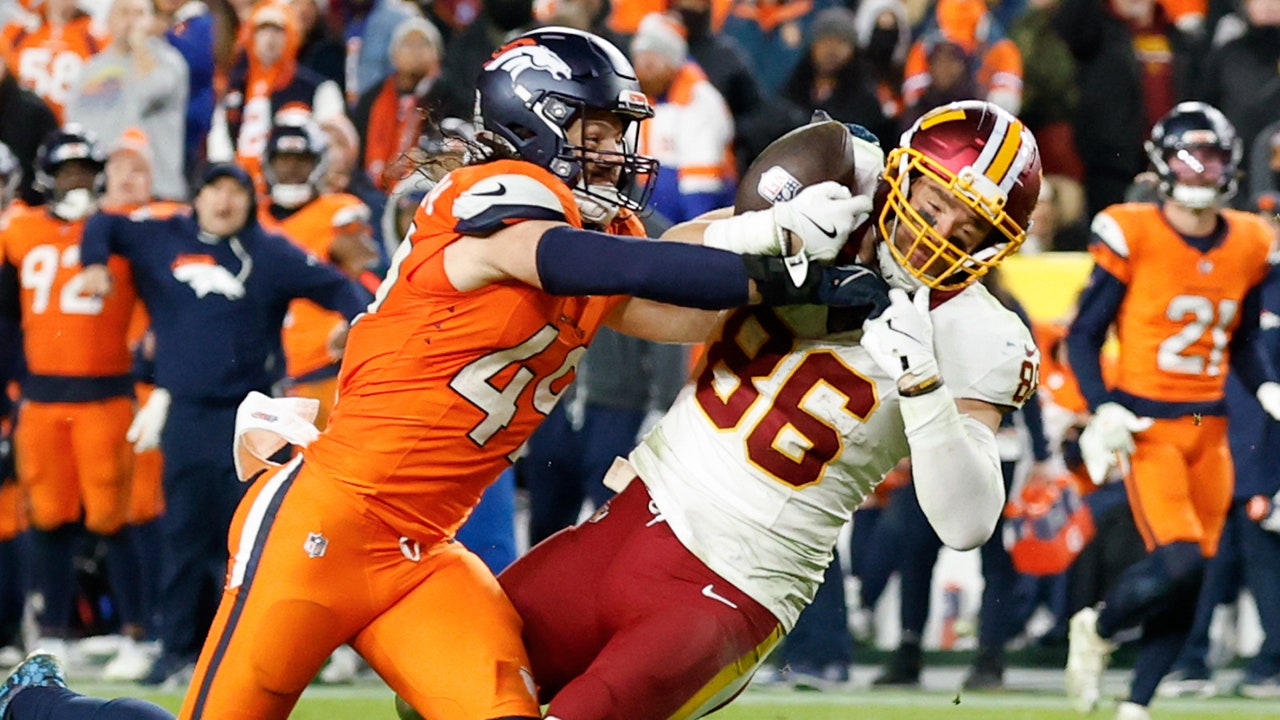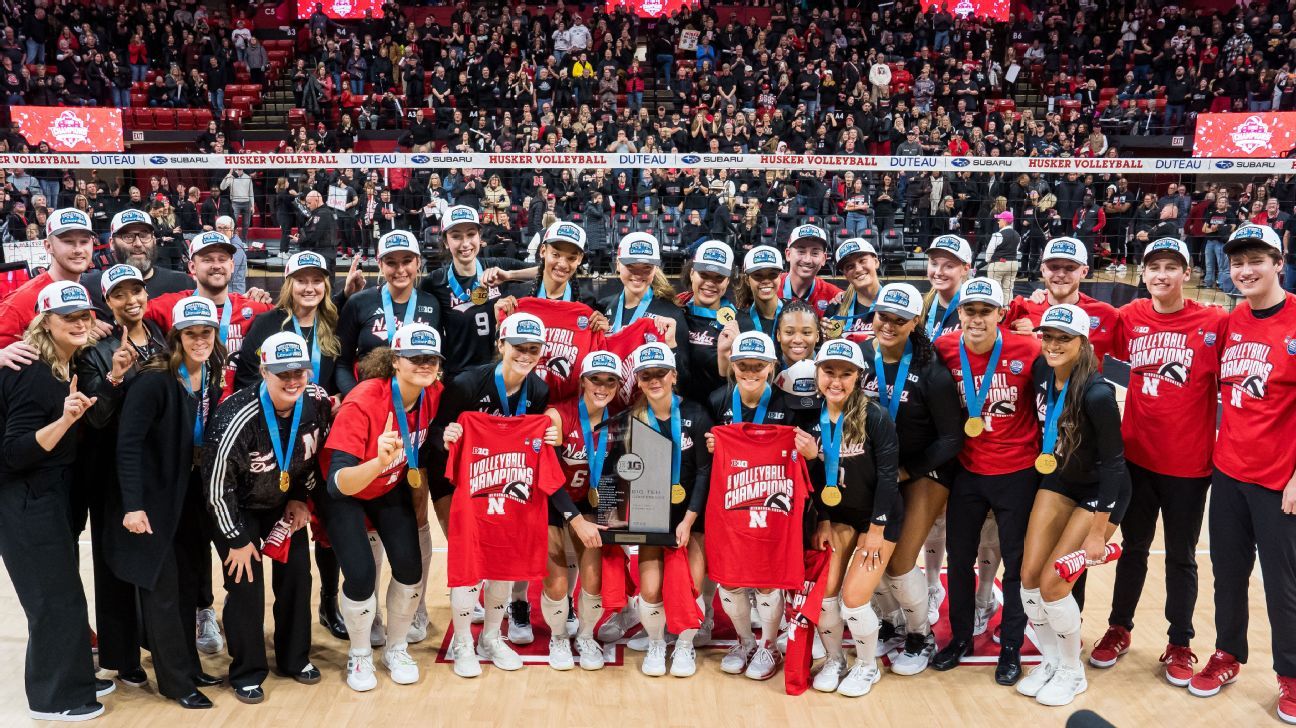Sports
Bring back the bison: How an on-campus movement resurrected Indiana’s mascot after 50 years

What, exactly, is a hoosier?
It’s a riddle pondered by many. The simplest answer is the strongest: It’s a person from Indiana. The specifics, though, get more difficult.
There have been dozens of theories and explanations over the years. A bill filed to the Indiana House of Representatives in 2023 cited Harry Hoosier, a former slave-turned-Methodist preacher who passed away in 1806, as the origin of the nickname. The Indiana Historical Bureau notes a number of possible written origins for the word on its website, including references to a poem and a boat from the 19th century.
This uncertainty has long put Indiana University athletics, whose squads have been nicknamed the Hoosiers for well over a century, in a strange spot. There’s little doubt Indiana’s teams play under a fitting moniker. But what sort of image represents a hoosier? What type of mascot should cheer on the teams?
A number of proposed mascots, official and unofficial, vied for the hearts of the Hoosier faithful throughout the 20th century. A goat, collie and bulldog were among the options that made bids, as well as the infamous 1979 reign of “Mr. Hoosier Pride,” a bizarre cowboy-like figure described in one letter to the editor of the Indiana Daily Student as “the most asinine and ridiculous-looking character anyone could have ever dreamed up to be IU’s mascot.”
But none of Indiana’s assorted short-lived forays into mascot-ery caught the attention of students and alumni quite like the bison.
In October 1965, Indiana adopted the bison as the school’s new mascot, based on the animal’s former migration history in the region and representation on the state seal. A month later, a bison mascot was officially unveiled ahead of the school’s football game with rival Purdue.
And yet, within a decade, the bovine project had been scuttled.
Despite different iterations of the costume, the bison suit was consistently a comedy of frustrations. Most notably, the oversized bovine head limited the wearer’s range of motion. One version required a cheerleader to lead the mascot onto the field with a rope leash. And regardless of suit design or setup, there was also plain reality: Furry bovine suits are inherently uncomfortable on a hot day.
The mascot was also, truth be told, a tad terrifying. In 1969, around the time of the costume’s retirement, the Indiana Daily Student newspaper quoted assistant athletic director Bob Dro as saying “the main criticism seems to be, ‘It’s a beautiful head but it looks like the devil with a cheerleader in it.'”
Not helping matters was the fact that the bison’s brief run coincided with a general down period for Indiana football. There was the magical run to the 1967 Rose Bowl, but a backslide to losing seasons began shortly thereafter.
With results lagging, there wasn’t a ton of affection around campus for the bulky bison suit. As the Kokomo Tribune bluntly noted in 1969: “the bison has been relegated to a storeroom for lack of interest.”
And just like that, the mascot was lost to history.
Or at least it might have been.
But legends — and oversized furry mascots — never truly die. So, 50 years after Indiana officially retired the bison, it is ready to make a return to the sidelines of Memorial Stadium thanks to a tale that includes a college bar, determined professors, a bike race and more.
Phase I: “Dick was always a visionary”
The initial disappearance of the original bison suit wasn’t permanent.
Although 1969 is the consensus accepted retirement date for the mascot’s first stint, Indiana University’s archives show the oversized costume making at least two appearances in 1973 during Lee Corso’s first year as the Hoosiers coach. Archives of the Bloomington Herald-Times also show a photo of the mascot during a 1974 contest.
More importantly, though, the bison remained a campus fixture.
The animal appears on the school’s coat of arms, and the school’s ROTC unit has long been known as the Bison Battalion. Football players under coach Bill Mallory donned bison-themed helmet stickers in the 1980s and ’90s, and a pregame package shown on the Memorial Stadium video board in the 2010s featured a bison stampede.
Just a block away from campus is the most notable example of the bovine in Bloomington — the locally famous bar and restaurant Nick’s English Hut, where the bison has long served as the establishment’s own mascot.
Walk off East Kirkwood Avenue and into Nick’s and it’s impossible to miss the bison imagery. The logo on the front door. The shot glasses behind the bar. And, most glaringly, a bison head mounted on the wall just a few paces away from the entrance.
“I still to this day don’t know if it’s real or not,” said Julian Davila, a former graduate student at Indiana and security guard-turned-bartender at Nick’s since 2023. “But I like it because it’s very unique. You don’t see bisons just off the wall like that typically.”
According to Nick’s current owner, Gregg “Rags” Rago, the bison was adopted by his predecessor, Dick Barnes, around the same time the school made its original effort to institute the animal as the official mascot.
“Dick was always a visionary,” Rago told ESPN. “So when IU started using the bison then … He kind of accepted it as part of the mascot for Nick’s English Hut.”
Although Indiana’s bison petered out, the animal became nearly synonymous with Nick’s — Davila noted one of his friends even has a tattoo of Nick’s bison — which has long been considered one of Bloomington’s must-visit locales.
“Over the years we developed and put it on different parts of our T-shirts, hats, whatever,” Rago said of the bison. “So many people have our T-shirts, our hats … they’re all over the world. There’s IU alum[ni] all over the world. And most IU alums have been at Nick’s at one time or another.”
Schools don’t just restore failed mascots for no reason, though. Although the bison might have always had a presence, the movement to bring it back officially was far from organized.
But as the original bison’s retirement approached its 50-year anniversary five years ago, the threads of a more distinct movement began to form.
Phase II: “Bring back the bison”
Paul Gutjahr looked up at the IU coat of arms and saw an opportunity.
It was 2020, and the COVID-19 pandemic was drastically altering the student experience at colleges all over the country. Gutjahr, an Indiana humanities professor who was also serving as an associate dean, was looking for messages that could inspire persistence and community in his students.
He remembered a saying from his time living in Colorado: “Be the buffalo.” As the story goes, when stormy weather arrives, while cattle will simply meander as the conditions persist, buffalo will charge into the storm to get through it faster.
Already a supporter of bringing back the former mascot, Gutjahr now saw a potential means of rallying his students behind the movement. As students prepared to come back to school, he connected the prospective return of the bison mascot with the ongoing return of the campus community.
“I thought, this is really good. Because what this allows me to do is leverage the bison stuff, the cohere community, the end of the storm story, with bringing something back. Getting students excited about bringing something back,” Gutjahr recalled.
Gutjahr’s message about bringing back the bison quickly took hold among students, so he leaned into the idea further. He had ordered a pair of bison mascot costumes, which began making impromptu appearances around the school. He had also been designing bison-themed shirts (often printed with glow-in-the-dark ink for an additional popularity boost), and added magnets and hats. His merchandise soon became in vogue on campus as he further expanded his portfolio of bisonwear.
“We never sold the shirts. We only gave them away,” Gutjahr said. “And when word got out that I was giving them away and I would have a new design out … I got mobbed.”
In fellow associate dean Galen Clavio, the director of Indiana’s sports media program, Gutjahr found both another distribution network for his merchandise (which also included pens, car magnets and more) and a partner in crime for grassroots bison revival messaging.
A fourth-generation Hoosiers alum, Clavio’s Indiana bison memory dates back to his childhood. His parents owned a crocheted crimson-and-cream rug that featured the bovine motif and the phrase “Hurryin’ Hoosiers,” a term used to describe legendary basketball coach Branch McCracken’s squads.
Clavio saw the mascot as an underused means of potentially expanding Indiana’s brand. He connected with Gutjahr and would hand shirts out to his own media school students, noticing similar enthusiasm around campus for the project.
He expanded the movement to a digital front as well. If Gutjahr’s shirts put the bison in front of students all over campus, Clavio ensured that it entered the airwaves as well. He began punctuating each episode he hosted on his podcast, “CrimsonCast,” with “Bring back the bison.”
Slowly but surely, the campaign picked up steam. “Bring back the bison” took hold as a popular rallying cry among students and alumni on social media. Bison merchandise no longer was an exclusive sign that you had taken a class with Professor Gutjahr or Professor Clavio, but simply an established part of the local fashion scene.
“I’ll drive around Bloomington, I’ll be on campus, I’ll be in my neighborhood — I live on the southeast side of town — and I’ll see people walking through the neighborhood with the shirts that Paul made,” Clavio said. “I didn’t hand them out to those people.”
But as charming as the idea of a student and professor T-shirt revolution single-handedly bringing back the bison might be, support from more established forces was needed. Thankfully, a local company was on hand to offer just that.
What started as a side project for 2016 IU graduate Connor Hitchcock is now Homefield Apparel, a company with a combined social media following of over 150,000 and licensing deals with 200 schools.
Homefield sells shirts, hats, sweaters, joggers and more. Yet, even as Homefield’s profile grew, it was one of Hitchcock’s first designs that continued to stand out above the rest in terms of sales.
“Myself and my co-founder Christa put the bison on a shirt. And it went nuts,” Hitchcock said. “And when the side project became Homefield and it became our full-time jobs in 2018, that was still our No. 1-selling IU design. And still to this day, across all pieces of merchandise, that is our No. 1-selling design.”
And then the bison movement got a boost from an unlikely source.
Phase III: “Haven’t got a cease and desist …”
Bearing the lofty nickname of “The World’s Greatest College Weekend,” the Little 500 carries no small weight when it comes to Indiana’s campus lore. Twenty-five thousand fans flock annually to Bloomington for the nearly 75-year-old bike race, which is put on by the Indiana University Student Foundation.
Aware of the bison and its history, then-director of the IUSF Trent McGee had an idea — since the Indiana University Student Foundation is a separate entity from the university itself, why couldn’t the 2024 edition of the Little 500 have its own bison mascot? Gutjahr had a bison costume available on campus and was more than happy to loan it out to advance the cause. The logic was sound.
What was not guaranteed, however, was positive reception from the school’s administration.
Planning for Little 500’s bovine mascot was done silently. There was a secret committee — nicknamed “the Herd” — of students who discussed what sort of role the bison would play. McGee quietly gave a heads-up to his bosses in a secret meeting and said he’d accept blame if the school was upset.
Eventually, the aptly named Ryder was born. Soon enough, the moment of truth came. It was April 19, 2024, the opening day of the 73rd Little 500. Would Ryder’s unveiling be celebrated like the return of a prodigal son? Would university officials immediately shut things down?
The most immediately recognizable emotion of Ryder’s debut was … confusion. The Little 500 organizers had tried their best to hint at the mascot’s comeback on social media, but it was hard to generate much awareness without being more overt about their plan.
“Even the winners” — who received miniature plush bisons as trophies for their team’s victory — “were like, ‘why am I receiving this?'” McGee recalled.
But once the air of mild bewilderment was lifted from Bill Armstrong Stadium, the kids in attendance loved Ryder, and so did their families.
“Honestly, I thought that the kids would be scared. I mean, I’m like 5-9, so it’s like a 5-foot-9 bison standing over you,” Mehar Parmar — who with Herd leader Conrad FitzSimmons was one of the committee members to don the bison suit — told ESPN. “These little children were so excited, and their parents were equally excited. There were generations of grandparents that had gone to IU … they were telling us ‘we went to school when this was a thing, we’re so excited to see you again.'”
More notable for the cause, though, was the fact that school officials weren’t upset. In fact, to McGee’s surprise, they were willing to chat and take photos with the bison mascot.
Seeing university administrators actively engage with the mascot was the sign to McGee that the movement to bring back the bison was on firmer ground than had been perceived.
“Haven’t got a cease and desist from General Counsel yet,” McGee perhaps-not-entirely-jokingly texted Clavio after the bison mascot rode in the parade that precedes the women’s race. “So good sign?”
Phase IV: “We could have done something bigger”
Six months after the 73rd Little 500, and 51 years after a bison was last seen sharing a sideline with Corso, a packed crowd was at a fever pitch minutes before kickoff on a picturesque fall Saturday in Bloomington.
It had been a party all morning in Monroe County, with the undefeated Hoosiers football team as the guests of honor. “College GameDay” was in town for just its second trip to Memorial Stadium, bringing Corso back to the school where he spent the majority of his head coaching career.
“It’s obvious who I’m picking,” Corso admitted as he set up what was destined to be a particularly meaningful edition of his iconic weekly mascot headgear pick.
Corso reached down and grabbed … an Indiana baseball cap. There was no mascot head for him to don.
It didn’t take away from the hype, as Memorial Stadium still let out a hearty cheer (and the Hoosiers went on to win 31-17), but senior associate athletic director Jeremy Gray saw a missed opportunity.
“We saw it as kind of a moment where maybe we could have done something bigger and better,” Gray recalled.
Corso’s headgear pick that wasn’t was one of a number of key points in a memorable Indiana football season where the real possibility of bringing back the bison emerged. As the Hoosiers steamrolled their way to an 11-win season — the first double-digit-win campaign in program history — and a College Football Playoff appearance, fan enthusiasm skyrocketed.
Indiana had been looking into ways to revamp the Memorial Stadium experience. What better way to build on the momentum generated in coach first-year football coach Curt Cignetti’s debut campaign than to actually, finally, bring back the bison?
By December, the bison return movement was unstoppable.
Then-student government president Cooper Tinsley, looking for something to unify the student body, had proposed action. Eventually, the Bring Back the Bison Act of 2024 was born.
Debate within student government over whether the resolution should be passed was intense. Skeptics questioned whether there was actually as much of a pro-bison student groundswell as had been suggested. But the bill’s supporters had evidence at the ready: a poll that ran on the student government Instagram account.
Seventy-two percent of votes on the poll were in support of the bison’s return. The act passed.
“[It] might seem funny, but these were, like, genuine debates that were going on for over an hour,” Tinsley recalled.
With overwhelming student support both clear and now legislatively codified, the school’s athletic department got to work on logistics. Only one element about the bison’s return was certain: It wasn’t going to be quiet.
Phase V: “The thing’s got to be fun”
The mascot’s unveiling offered Gray, an Indiana alumnus and longtime advocate for the bison’s return, a chance to blend several of his passions into one project.
“I’m a huge, huge movie fan” Gray told ESPN. “And so I really just took tropes from some of my favorite movies from 1975 to about 2005.”
In total, Indiana athletics rolled out five videos over a stretch of nearly two weeks to hint at, and later reveal, Hoosier the bison. Guest stars and cameos included a who’s who of Indiana athletics figures (Cignetti, basketball coach Darian DeVries), athletic administrators (Gray), and figures in the movement to bring back the bison (Clavio, Gutjahr).
The videos include nods to “Pulp Fiction,” “Jurassic Park,” “E.T.” and “more.
The fifth and final video uses a “Star Wars”-style introduction text to set up a reenactment of the Bring Back the Bison Act’s ratification. The video then segues to a nod to, in the words of Gray, “the best non-religious comeback story in the history of the world”: Michael Jordan’s return to the NBA. Hoosier’s costume then finally comes into view.
“The thing’s got to be fun,” Gray remarked. “Successful mascots are fun mascots.”
Finally unleashed. 🦬
Welcome back home, @HoosiertheBison. pic.twitter.com/hMotSXeF0A
— Indiana Hoosiers (@IUHoosiers) May 27, 2025
What’s the actual plan for the role Hoosier will play in its debut campaign this fall? Indiana is keeping those details a closely guarded secret. But if Gray’s logic is any indication, the unveiling’s reception might make the usual mascot antics a little more bold.
“At first, it’s like, you know, let’s make sure that it’s successful,” Gray said. “It’s like a rookie quarter[back]. Put it in a position where it can succeed, run the plays that it can remember, you know, all that kind of stuff.
But after years of hard work to bring the bison back from the abyss, why not go big?
“Now, it’s like, ‘You know what? People are pretty fired up about this. What if we get this thing a car?'”
Sports
India Triumphs Over South Africa in First ODI Thanks to Kohli’s Heroics – SUCH TV

Star batsman Virat Kohli slammed a record-extending 52nd one-day international century, scoring 135 off 120 balls to lead India to a thrilling 17-run victory over a determined South Africa in the first ODI on Sunday at Ranchi.
Kohli shared a second-wicket partnership of 136 runs with fellow stalwart Rohit Sharma, setting India on course for a competitive 349-8.
South Africa’s number eight, Corbin Bosch, made a valiant 67 off 51 balls, keeping his team in contention until the final moments. Entering the 50th over, the visitors needed 18 runs with one wicket left, but Bosch fell on the second ball, leaving South Africa all out for 332.
Earlier, Matthew Breetzke (72) and Marco Jansen (70) had forged a fighting 97-run stand for the sixth wicket, reviving the chase after South Africa slipped to 11-3 and 77-4.
Kuldeep Yadav was the standout bowler for India, taking 4-68, including a crucial double strike to dismiss Jansen and Breetzke in just three balls—a turning point in the match that helped India secure a 1-0 lead in the three-match series.
Kohli, now 37, raised his 83rd international century across all three formats with a boundary off Jansen, celebrating with the raucous home crowd.
“If you’ve played over 300 games and so much cricket, you know your reflexes and physical ability are there to bat long,” said Kohli, the player of the match.
“As long as you’re hitting the ball well and playing good cricket, it’s about being physically fit, mentally ready, and excited.”
Kohli mania
An enthusiastic Indian fan breached security and ran onto the field to touch Virat Kohli’s feet before being restrained.
Kohli now holds the record for the most ODI hundreds, with Indian legend Sachin Tendulkar second with 49.
In a single format, he also leads the list, while Tendulkar’s 51 hundreds came in Tests.
Kohli and 38-year-old Rohit Sharma, who scored 57, now only play ODIs after retiring from T20s and Tests.
Their presence strengthened India, led by KL Rahul in the absence of the injured Shubman Gill, following a 2-0 Test series whitewash against South Africa.
Rohit lost fellow opener Yashasvi Jaiswal early for 18, but Kohli walked in to a roar from a 38,000-strong crowd.
The pair steadied the innings before Rohit was trapped lbw by Marco Jansen.
Rohit hit three sixes in his 51-ball knock, taking his total to 352 sixes in ODIs, surpassing Pakistan’s Shahid Afridi (351).
Kohli accelerated after reaching his first century since February, hitting off-spinner Prenelan Subrayen for two fours and two sixes in the 39th over, scoring 21 runs. He eventually fell to Nandre Burger, caught by Ryan Rickelton, after hitting 11 fours and seven sixes.
KL Rahul contributed 60 off 56 balls, while Ravindra Jadeja added 32 off 20.
Corbin Bosch recorded his first ODI half-century, keeping South Africa in the contest, making the series opener an exciting match ahead of the second ODI in Raipur on Wednesday.
“Great to sit in the change room and watch the guys do their thing,” said stand-in skipper Aiden Markram. “Never losing the belief that we can pull off a rabbit from the hat.”
Sports
Broncos secure thrilling OT victory over Commanders behind clutch performances

NEWYou can now listen to Fox News articles!
The Denver Broncos and Washington Commanders’ matchup on Sunday featured several great plays, but the most impactful came in overtime.
It didn’t take long for the Broncos to score. Bo Nix made four completions, including a 41-yard pass to Evan Engram, and then handed the ball off to running back RJ Harvey, who scored from five yards out to take a 27-20 lead.
CLICK HERE FOR MORE SPORTS COVERAGE ON FOXNEWS.COM
Denver Broncos running back RJ Harvey celebrates after scoring during the second half of an NFL football game against the Washington Commanders Sunday, Nov. 30, 2025, in Landover, Maryland. (AP Photo/Stephanie Scarbrough)

Washington Commanders quarterback Marcus Mariota (8) throws during the first half of an NFL football game against the Denver Broncos Sunday, Nov. 30, 2025, in Landover, Maryland. (AP Photo/Nick Wass)
Commanders quarterback Marcus Mariota created some late-game heroics. He found Deebo Samuel on 3rd-and-14 for a 38-yard gain. He connected with Terry McLaurin to bring the game to within one point. With nothing to lose, the Commanders decided to go for two and the win. Mariota dropped back to pass and his attempt to Jeremy McNichols was blocked by Broncos pass rusher Nik Bonitto.
The Broncos won the game, 27-26.
Nix finished 29-of-45 for 321 yards and a touchdown pass. Harvey had 35 rushing yards and two rushing touchdowns.
Harvey and Bonito’s overtime heroics were just two of a handful of great plays made during the game.
Nix did his best to pull out all the stops. He helped put Denver ahead before halftime when he threw a touchdown pass to Courtland Sutton as he was falling to the ground. He avoided the rush and his calf was about to hit the ground before he fired the ball to Sutton in the end zone.

Denver Broncos linebacker Alex Singleton (49) breaks up a pass intended for Washington Commanders tight end Zach Ertz (86) in the fourth quarter of the game at Northwest Stadium on Nov. 30, 2025. (Geoff Burke/Imagn Images)
BRONCOS’ BO NIX THROWS TD PASS WHILE FALLING TO GROUND IN STUNNING PLAY
Commanders wide receiver Treylon Burks likely said, “Watch this,” before he made his sensation play. Burks received a pass from Mariota in the end zone. He, somehow, made a one-handed catch for a crucial go-ahead touchdown.
It was Burks’ second career touchdown catch and it was one that the Commanders really needed.
Mariota was trying to keep the drive alive with under four minutes to go in the game. He found tight end Zach Ertz open in the middle of the field. The ball was thrown high and Ertz was able to grab the pass and bring it down.

Denver Broncos quarterback Bo Nix throws during the first half of an NFL football game against the Washington Commanders Sunday, Nov. 30, 2025, in Landover, Maryland. (AP Photo/Stephanie Scarbrough)

Washington Commanders running back Chris Rodriguez Jr. (36) celebrates after scoring during the first half of an NFL football game against the Denver Broncos Sunday, Nov. 30, 2025, in Landover, Maryland. (AP Photo/Nick Wass)

Denver Broncos wide receiver Courtland Sutton (14) celebrates after catching a touchdown pass from quarterback Bo Nix, right, during the first half of an NFL football game against the Washington Commanders Sunday, Nov. 30, 2025, in Landover, Maryland. (AP Photo/Stephanie Scarbrough)
But just as he was going to secure the catch, Broncos linebacker Alex Singleton knocked the ball loose and the pass was incomplete. Washington punted the ball away.
Singleton was playing in his first game since he underwent testicular cancer surgery three weeks ago. It was a big play, but it came just a few minutes too early as Mariota would lead the Commanders down the field to tie the game.
Mariota played as well as one could play in a hard-fought game. He was 28-of-50 with 294 passing yards and two touchdown passes. He also had 55 yards on the ground.
Bundle FOX One and FOX Nation to stream the entire FOX Nation library, plus live FOX News, Sports, and Entertainment at our lowest price of the year. The offer ends on Jan. 4, 2026. (Fox One; Fox Nation)
CLICK HERE TO DOWNLOAD THE FOX NEWS APP
Ertz finished with 10 catches for 106 yards. McLaurin had seven catches for 96 yards.
Denver improved to 10-2 with the win and have won nine straight games. Washington fell to 3-9.
Follow Fox News Digital’s sports coverage on X and subscribe to the Fox News Sports Huddle newsletter.
Sports
Huskers earn top overall seed in volleyball tourney

Undefeated Nebraska earned the No. 1 overall seed in the NCAA women’s volleyball tournament bracket released Sunday.
The five-time national champion Huskers (30-0) have dominated this season, dropping just seven sets. They lead Division I in hitting percentage at .352.
Dani Busboom Kelly, who won NCAA titles as both a Nebraska player and assistant, took over at her alma mater this season after longtime Huskers coach John Cook retired. Busboom Kelly led Louisville to the NCAA final in 2024, where the Cardinals lost to Penn State.
The other No. 1 seeds are Kentucky, Texas and Pitt. The Wildcats have won one NCAA title, and the Longhorns have four. The Panthers reached the final four the past four seasons but lost in the semifinals each time.
Pitt and Stanford finished tied atop the ACC at 18-2, and the Cardinal won their head-to-head matchup 3-2 at Stanford on Nov. 14. But the Panthers’ overall body of work secured them the last No. 1 seed, while nine-time NCAA champion Stanford is the No. 2 seed in Texas’ region.
SEC regular-season and tournament champion Kentucky defeated Texas 3-2 in the conference tournament final. They would face each other in the national semifinals should they advance that far.
Defending national champion Penn State, the only school that has appeared in every NCAA tournament dating back to the event’s start in 1981, is a No. 8 seed in Texas’ quarter of the bracket. St. Thomas (Minnesota) and Toledo are both making their first appearance in the tournament.
The Big 12 led all leagues with 10 teams in the field, the Big Ten has nine, the ACC seven and the SEC five.
Early-round matches will be held from Dec. 4 to 6 on campus sites. The regionals, scheduled for Dec. 11-14, will be hosted by the four highest seeds still standing in each quarter of the bracket.
The final four is at T-Mobile Center in Kansas City, Missouri, for the third time in the tournament’s history. It was there that Penn State won the championship in 2010 and Nebraska won its most recent title in 2017.
The national semifinals are Dec. 18 (ESPN), and the championship match is Dec. 21 (ABC).
-

 Sports1 week ago
Sports1 week agoWATCH: Ronaldo scores spectacular bicycle kick
-

 Entertainment1 week ago
Entertainment1 week agoWelcome to Derry’ episode 5 delivers shocking twist
-

 Politics1 week ago
Politics1 week agoWashington and Kyiv Stress Any Peace Deal Must Fully Respect Ukraine’s Sovereignty
-

 Business1 week ago
Business1 week agoKey economic data and trends that will shape Rachel Reeves’ Budget
-

 Tech6 days ago
Tech6 days agoWake Up—the Best Black Friday Mattress Sales Are Here
-

 Politics1 week ago
Politics1 week ago53,000 Sikhs vote in Ottawa Khalistan Referendum amid Carney-Modi trade talks scrutiny
-

 Fashion1 week ago
Fashion1 week agoCanada’s Lululemon unveils team Canada kit for Milano Cortina 2026
-

 Tech6 days ago
Tech6 days agoThe Alienware Aurora Gaming Desktop Punches Above Its Weight







